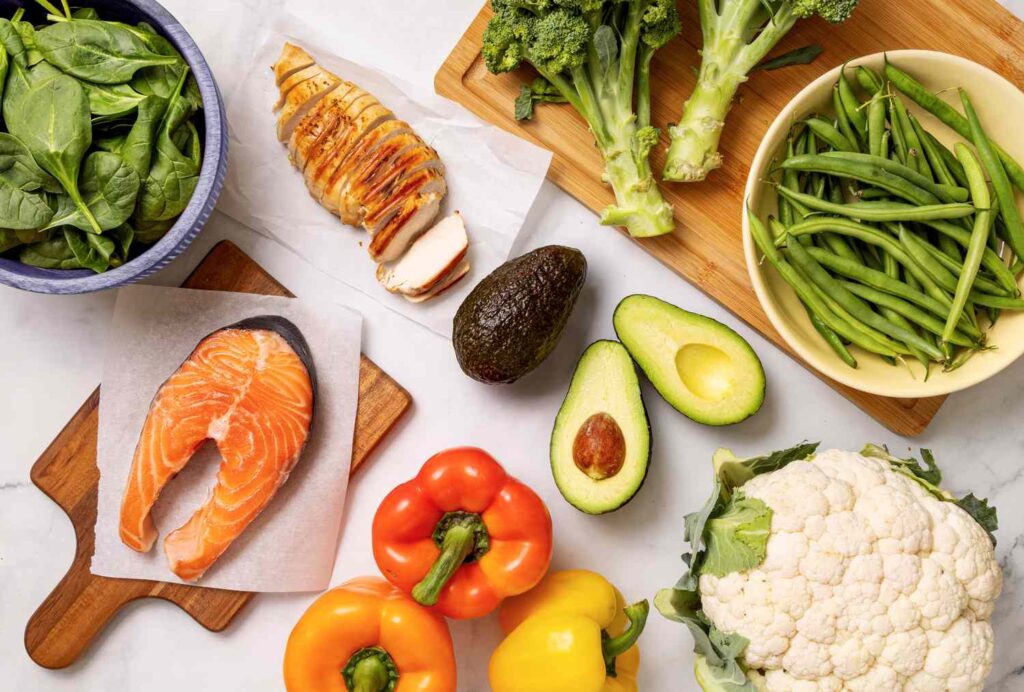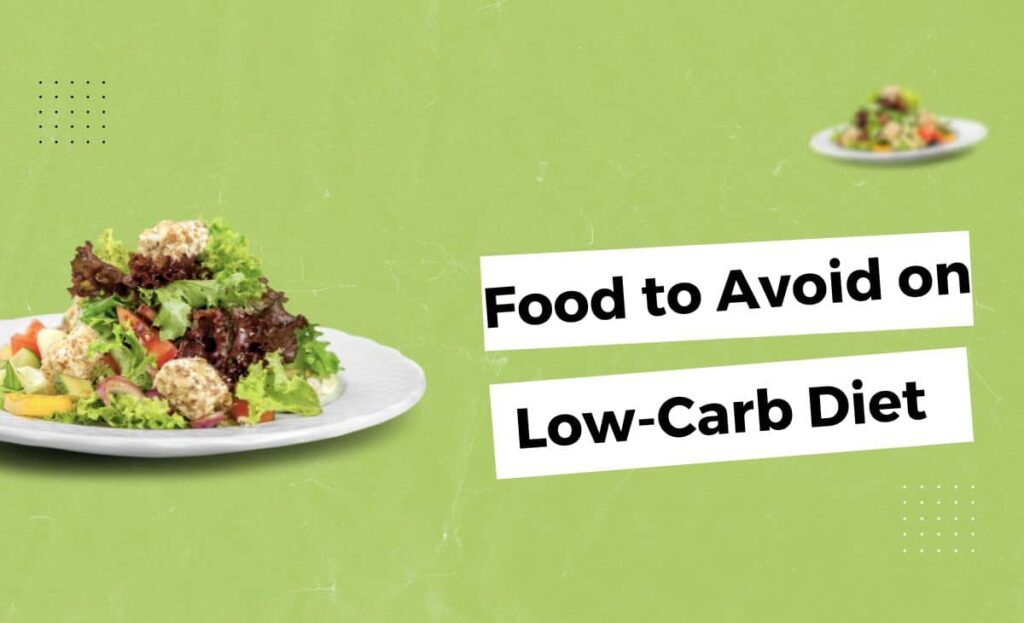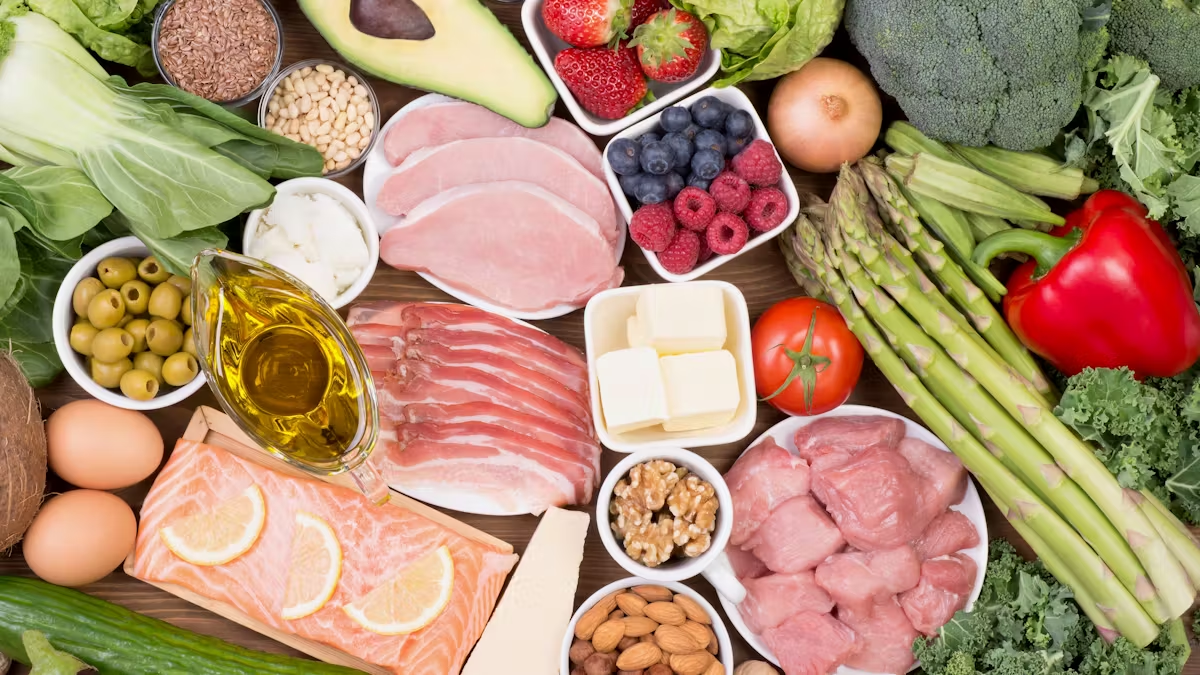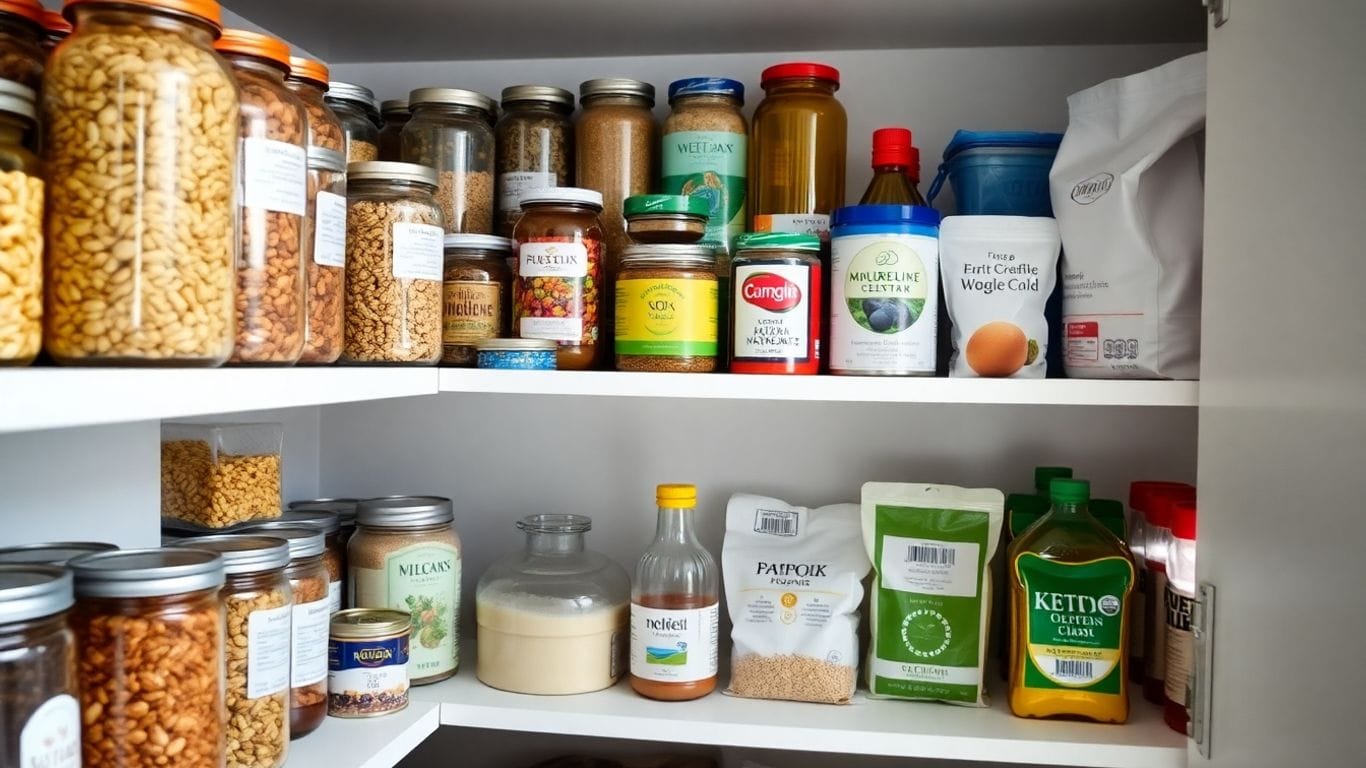Embarking on a low-carb diet can feel like navigating a new culinary landscape. The abundance of conflicting information, coupled with the pervasive presence of carbohydrates in modern diets, often leaves individuals feeling overwhelmed and unsure where to begin. But what if we told you that a low-carb lifestyle isn’t about restriction, but rather about a delicious and diverse world of foods waiting to be explored?
This comprehensive guide aims to demystify the low-carb diet, providing you with a complete list of foods you can enjoy, alongside practical advice and evidence-based insights. Whether you’re aiming for weight loss, improved metabolic health, or simply a more sustainable way of eating, understanding the “what” and “why” of low-carb foods is your first crucial step.
Understanding the Low-Carb Philosophy: More Than Just “No Carbs”
Before diving into specific food lists, it’s essential to grasp the core principle behind a low-carb diet. It’s not about eradicating all carbohydrates from your plate, but rather about significantly reducing your intake of refined carbohydrates and sugars, and focusing on nutrient-dense, whole foods.
Carbohydrates are one of the three macronutrients (along with fats and proteins) that provide energy to our bodies. However, not all carbs are created equal.
- Simple Carbohydrates: Found in sugars, white bread, pastries, and sweetened beverages, these are quickly digested, leading to rapid spikes in blood sugar and insulin. Over time, this can contribute to insulin resistance, weight gain, and an increased risk of chronic diseases.
- Complex Carbohydrates: Found in whole grains, legumes, fruits, and vegetables, these are digested more slowly, providing a sustained release of energy and a wealth of fiber, vitamins, and minerals.
- Fiber: A type of carbohydrate that our bodies cannot digest. It passes through our system, aiding digestion, promoting satiety, and stabilizing blood sugar. On a low-carb diet, we often focus on “net carbs,” which is total carbohydrates minus fiber.
A low-carb diet typically restricts carbohydrate intake to anywhere from 20 grams (for very strict ketogenic diets) to 100-150 grams per day, depending on individual goals and metabolic responses. The emphasis shifts to protein and healthy fats, which are more satiating and have a minimal impact on blood sugar.
Why Consider a Low-Carb Diet?
The benefits associated with a low-carb approach are increasingly supported by scientific research:
- Weight Loss: By reducing insulin levels and promoting satiety, low-carb diets can lead to significant and sustainable weight loss without feeling deprived.
- Blood Sugar Control: For individuals with type 2 diabetes or insulin resistance, a low-carb diet can dramatically improve blood glucose levels and reduce the need for medication.
- Improved Heart Health Markers: Studies show potential improvements in cholesterol profiles (increased HDL, decreased triglycerides) and blood pressure.
- Increased Satiety: Protein and fat are more filling than carbohydrates, helping to reduce cravings and overeating.
- Enhanced Mental Clarity and Energy: Many people report more stable energy levels and better focus once their bodies adapt to burning fat for fuel.
(Source: “Low-Carbohydrate Diets for Type 2 Diabetes Management” – Diabetes Therapy, 2018; “Effect of low-carbohydrate diets on weight and cardiovascular risk factors” – Obesity Reviews, 2019)
The Core Pillars of a Low-Carb Diet: What to Prioritize
Building a low-carb meal plan is straightforward once you understand the foundational food groups. These are the stars of your new eating style, offering both nutrition and flavor.

1. Meats and Poultry: Protein Powerhouses
These are the backbone of many low-carb diets, providing essential amino acids and healthy fats. Always opt for quality sources where possible.
- Beef: Steak (ribeye, sirloin, tenderloin), ground beef (80/20 for higher fat), roasts.
- Pork: Pork chops, tenderloin, bacon (uncured, no added sugar is best), ham (check for sugar content).
- Chicken: Thighs, drumsticks, wings (skin-on for more fat), breast (can be leaner, so pair with fat).
- Turkey: Ground turkey, turkey breast, turkey bacon (check ingredients).
- Lamb: Chops, roasts, ground lamb.
- Game Meats: Venison, bison, duck – excellent lean protein sources.
- Organ Meats: Liver, heart, kidneys – incredibly nutrient-dense, though an acquired taste for some.
Pro Tip: Don’t fear the fat! Fat on meats contributes to satiety and flavor. Look for grass-fed and pastured options if available, as they often have a better fatty acid profile.
2. Fish and Seafood: Omega-3 Rich Delights
An excellent source of protein, essential vitamins, and healthy omega-3 fatty acids, especially fatty fish.
- Fatty Fish: Salmon, mackerel, sardines, anchovies, herring, trout.
- White Fish: Cod, haddock, sole, halibut, tilapia.
- Shellfish: Shrimp, crab, lobster, mussels, oysters, scallops (be mindful of carb count for some shellfish, though generally low).
Key Benefit: Omega-3 fatty acids are crucial for brain health, heart health, and reducing inflammation. Aim for at least two servings of fatty fish per week.
3. Eggs: Versatile Nutrient Bombs
Often called nature’s multivitamin, eggs are inexpensive, versatile, and packed with protein, healthy fats, and numerous vitamins and minerals.
- Whole eggs (yolk included!)
- Omelets, scrambled, fried, boiled, poached – the possibilities are endless.
Sustainability Note: Look for pastured or free-range eggs for better nutrient profiles and ethical sourcing.
4. Non-Starchy Vegetables: Fiber and Micronutrients Galore
This is where you’ll get a significant portion of your fiber, vitamins, and minerals without adding many net carbs. Focus on vegetables that grow above ground.
- Leafy Greens: Spinach, kale, lettuce (romaine, butter, iceberg), arugula, Swiss chard, collard greens.
- Cruciferous Vegetables: Broccoli, cauliflower, Brussels sprouts, cabbage, bok choy.
- Other Low-Carb Veggies: Asparagus, bell peppers (especially green, red, yellow in moderation), zucchini, cucumber, green beans, mushrooms, celery, radishes, tomatoes (in moderation), eggplant.
- Herbs: Parsley, cilantro, basil, oregano, rosemary, thyme – use generously for flavor.
What About Starchy Green Light Carbs? Vegetables like potatoes, sweet potatoes, corn, and peas are high in starch and generally avoided or consumed in very small quantities on a low-carb diet.
5. Healthy Fats: Your New Energy Source
When you reduce carbohydrates, your body shifts to burning fat for fuel. Therefore, incorporating plenty of healthy fats is crucial for energy, satiety, and nutrient absorption.
- Avocados: Whole avocados, avocado oil.
- Olive Oil: Extra virgin olive oil for dressings and finishing, regular olive oil for cooking.
- Coconut Oil: Excellent for higher-heat cooking, adds a unique flavor.
- Butter & Ghee: Grass-fed butter is preferred for its nutrient content.
- Nuts & Seeds: Almonds, walnuts, pecans, macadamia nuts, chia seeds, flax seeds, pumpkin seeds, sunflower seeds. (Consume in moderation as carbs can add up, and some nuts are higher in omega-6s).
- Full-Fat Dairy (if tolerated): Heavy cream, sour cream, full-fat Greek yogurt (in very small amounts, check labels), cheeses.
Hidden Carbs, Be Label Detective: Always check the labels on salad dressings, sauces, and marinades, as many contain added sugars and unhealthy oils. Make your own when possible.
6. Dairy and Dairy Alternatives: Calcium and Creaminess
Dairy can be a great addition if you tolerate it, offering calcium and fat. Opt for full-fat versions to avoid added sugars and enhance satiety.
- Cheeses: Cheddar, mozzarella, gouda, brie, cream cheese, parmesan, feta. (Generally very low in carbs).
- Heavy Cream: Great for sauces, coffee, or making whipped cream.
- Sour Cream: Use as a topping or in dips.
- Full-Fat Greek Yogurt/Plain Kefir: In moderation, check carb count as some can be higher. Choose unsweetened.
- Unsweetened Almond Milk/Coconut Milk: Excellent alternatives for milk in coffee, smoothies, or recipes. (Avoid sweetened versions).
Lactose Intolerance Tip: Many people who are lactose intolerant can still enjoy hard cheeses and butter, as the lactose content is significantly reduced during processing.
Foods to Avoid on a Low-Carb Diet: The Red Light List
To successfully adopt a low-carb lifestyle, it’s just as important to know what to limit or eliminate. These foods are typically high in refined carbohydrates, sugars, and often unhealthy fats.

- Grains: Wheat, rice, oats, corn, barley, quinoa, bread, pasta, cereals, crackers.
- Sugar & Sweeteners: White sugar, brown sugar, high-fructose corn syrup, honey, maple syrup, agave nectar, most artificial sweeteners (some are acceptable in moderation, but natural ones like stevia and erythritol are preferred).
- Most Fruits: While fruits are healthy, many are high in natural sugars. Limit or avoid bananas, grapes, mangoes, pineapples.
- Starchy Vegetables: Potatoes (white and sweet), corn, peas, parsnips.
- Legumes (in large quantities): Beans, lentils, chickpeas (can be consumed in very small amounts by some, but generally higher carb).
- Processed Foods: Fast food, packaged snacks, cakes, cookies, pastries, candy, sugary drinks, fruit juice.
- Low-Fat/Diet Products: Often stripped of fat and loaded with sugar or artificial sweeteners to compensate for flavor.
- Seed Oils: Canola oil, soybean oil, corn oil, sunflower oil, safflower oil (these are highly processed and high in omega-6 fatty acids, which can be inflammatory).
Flavor Without the Carbs: Get creative with herbs, spices, vinegars, and low-carb sauces (like homemade pesto or sugar-free mustard) to keep meals exciting.
Foods to Snacks: Satisfying Cravings & Practical Guide
Snacking on a low-carb diet is easy once you know what to reach for. The goal is to choose options that are high in protein and healthy fats to keep you full and energized between meals.
- Hard-boiled eggs: Portable and packed with protein.
- A handful of nuts: Almonds, walnuts, macadamias, pecans (in moderation).
- Cheese slices or cheese sticks: Quick and satisfying.
- Avocado slices with salt and pepper: Healthy fats for sustained energy.
- Olives: A savory, fat-rich snack.
- Celery sticks with almond butter or cream cheese: A crunchy and creamy combo.
- Deli meat roll-ups: Turkey or ham rolled with cheese and a slice of avocado.
- Homemade low-carb fat bombs: Recipes available online, often made with coconut oil, nut butter, and cocoa.
- Leftover cooked meat or chicken: Perfect for a quick protein boost.
- Small portion of berries: Strawberries, blueberries, raspberries (higher in fiber, lower in sugar than other fruits).
- Pork rinds: A crunchy, salty, zero-carb snack.
- Sugar-free gelatin: A light, sweet treat.
- Beef jerky/meat sticks: Check labels for added sugars.
You Can Eat All This?! Absolutely! This extensive list demonstrates that a low-carb diet is anything but restrictive. With a focus on whole, unprocessed foods, you’ll discover a world of delicious and nutritious options that support your health goals.
Sample Low-Carb Meal Plan: A Day in the Life
To illustrate how these foods come together, here’s a sample day of low-carb eating:
Breakfast: Scrambled eggs with spinach, mushrooms, and cheddar cheese. A slice of avocado on the side.
Lunch: Large salad with grilled chicken or salmon, mixed greens, cucumber, bell peppers, olives, and a full-fat olive oil vinaigrette.
Dinner: Baked salmon with roasted asparagus and a side of cauliflower mash (made with butter and cream).
Snacks (as needed): A handful of almonds, a string cheese stick.
Hydration is Key: Don’t forget to drink plenty of water throughout the day. You can also enjoy black coffee, unsweetened tea, and sparkling water.
FAQ: Answering Your Top Questions About Low-Carb Eating
Is a low-carb diet safe long-term?
Yes, for most healthy individuals, a well-formulated low-carb diet can be safe and beneficial long-term. Many studies show improvements in metabolic markers and weight management. However, it’s always advisable to consult with a healthcare professional or a registered dietitian, especially if you have underlying health conditions or are on medication.
How many carbs can I eat on a low-carb diet?
The “sweet spot” for carb intake varies per individual and goal. Generally:
- Ketogenic: < 20-50g net carbs/day (induces ketosis).
- Moderate Low-Carb: 50-100g net carbs/day.
- Liberal Low-Carb: 100-150g net carbs/day.
It’s best to start lower and gradually increase your carb intake as you observe your body’s response.
Can I still eat fruit on a low-carb diet?
Some fruits, especially berries (strawberries, blueberries, raspberries) are lower in sugar and higher in fiber, making them suitable in moderation. High-sugar fruits like bananas, grapes, and mangoes are generally avoided. Focus on nutrient density over sugar content.
What about “net carbs”? How do I calculate them?
Net carbs are calculated by subtracting fiber and sugar alcohols (if applicable) from the total carbohydrates listed on a food label. Fiber is not digested and does not raise blood sugar, so it’s typically excluded from your carb count on a low-carb diet. For example, if a food has 10g total carbs and 5g fiber, it has 5g net carbs.
Will I experience side effects when starting a low-carb diet?
Some people experience what’s known as the “keto flu” or “low-carb flu” in the first few days or weeks. Symptoms can include fatigue, headache, irritability, and muscle cramps. This is often due to electrolyte imbalances as your body adapts. Ensuring adequate intake of sodium, potassium, and magnesium can help alleviate these symptoms. Drinking bone broth is often recommended.
Is exercise important on a low-carb diet?
Absolutely! Exercise is crucial for overall health, whether you’re on a low-carb diet or not. It aids in weight management, muscle building, cardiovascular health, and mood. While you might need to adjust your exercise intensity during the initial adaptation phase, regular physical activity complements a low-carb lifestyle beautifully.
Conclusion: Embrace a Delicious Low-Carb Lifestyle
Navigating the world of low-carb eating doesn’t have to be daunting. As this comprehensive list demonstrates, a diverse and delicious array of foods awaits you. By focusing on whole, unprocessed ingredients – meats, poultry, fish, eggs, non-starchy vegetables, and healthy fats – you can build satisfying meals that support your health goals.
Remember, consistency is key, and listening to your body’s signals is paramount. Experiment with different foods, discover new recipes, and enjoy the journey towards better health and well-being. A low-carb lifestyle is not just about what you remove from your plate, but about the nutrient-rich, flavorful foods you choose to embrace.

Hey there 👋 I’m Danilo — a food enthusiast passionate about low carb cooking and healthy living.
I believe that eating well doesn’t have to be complicated — it just needs flavor, love, and real ingredients. 🍳
Here, I share easy, low carb recipes made for real life — simple, satisfying, and full of taste. Let’s make healthy food something you actually crave!





